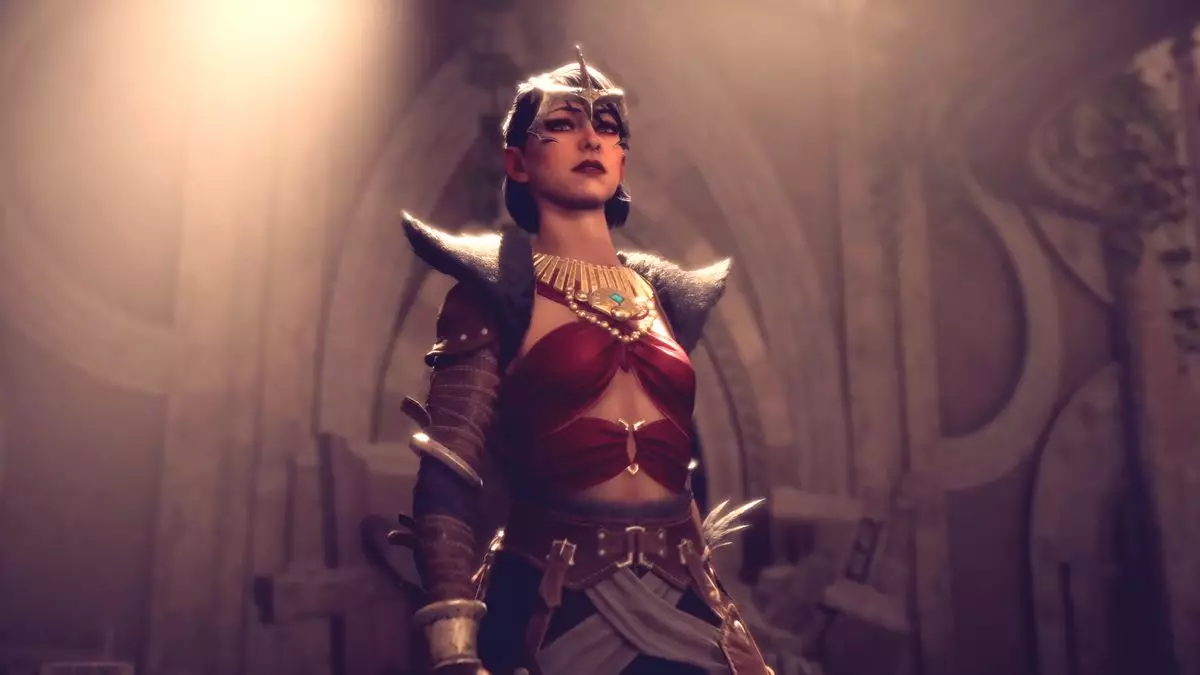David Gaider, the acclaimed narrative architect behind the legendary Dragon Age series, has provided an intriguing narrative on the genesis of one of its most iconic characters: Morrigan. Known for her cunning intelligence and mysterious allure, Morrigan embodies the intersection of folklore and personal nuance that Gaider and his team aimed to explore. The character was initially conceived as a blend of the mythical Morgan le Fey and the whimsical Delirium from Neil Gaiman’s Sandman series. However, as the creative process unfolded, the vision evolved into something far more complex—a character layered with cynicism, yearning for connection, yet consistently veiled in emotional distance.
In the early casting stages, Gaider and his team sought a Middle Eastern actress to voice Morrigan, aiming for a specific tonal quality that would resonate with the character’s essence. Shoreh Aghdashloo was originally considered for another role but had to bow out due to filming commitments. This left a significant gap in the voice cast, one that seemed increasingly challenging to fill. This gap ultimately led to an unexpected but fortuitous entry into the casting process: Claudia Black.
In a twist of fate, Claudia Black submitted an audition tape that diverged dramatically from the standard offerings for role auditions. Rather than delivering a traditional monologue, Black performed a slow, beat poet-style rendition of “Baby Got Back.” This unconventional approach was a gamble, yet it captivated the team. Gaider recalls, “I was already a fan, so I lost my goddamn mind.” The remarkable quality of her voice, gritty and raw, struck a chord with Gaider, leading him to advocate fiercely for her inclusion in the project despite some initial skepticism from management.
The initial resistance from higher ups didn’t deter Gaider; in fact, it fueled his passion for Black’s unique vocal characteristics. He appreciated her gravelly tone, jokingly likening it to the sound of someone who “smokes three packs a day.” It was this distinctive quality that aligned perfectly with Morrigan’s intricate personality. Once the team allowed Black to infuse her unique interpretation into the character, the initial doubts dissipated, and her performance resonated with everyone involved. Gaider’s insight into team dynamics during this phase highlights a crucial lesson in creative collaboration—when given freedom, talent often flourishes beyond expectations.
An endearing anecdote from Gaider’s reminiscences involves the first time he met Black, during which he unintentionally compared her to the whimsical actress Helena Bonham Carter. Black humorously downplayed the comparison, branding herself a “very cheap version” of the esteemed actress. These lighthearted moments not only illuminate the rapport between Gaider and Black but also provide a glance into the collaborative spirit that nurtured the creation of Morrigan.
By the time the first Dragon Age game graced the gaming world, Morrigan had morphed from a character inspired by mythical archetypes into the emotional fulcrum of the narrative. Gaider fondly regards her as “the heart of DAO,” stating that her evolution transcended all initial inspirations. The depth of her character has undoubtedly left an indelible mark on players, making her one of the most loved figures in the franchise’s expansive lore.
Years later, Claudia Black reprised her role in Dragon Age’s fourth installment, The Veilguard, further solidifying her connection with the character. While Morrigan may not hold the same companion role as in earlier installations, her presence continues to beguile fans, ensuring that her legacy within the gaming community remains vibrant.
The serendipitous path that led Claudia Black to bring Morrigan to life serves as a testament to the magic of storytelling and character creation within the gaming industry. It reminds us that sometimes the most memorable characters arise from unexpected beginnings and unconventional choices, ultimately crafting narratives that resonate deeply with audiences across the world.

